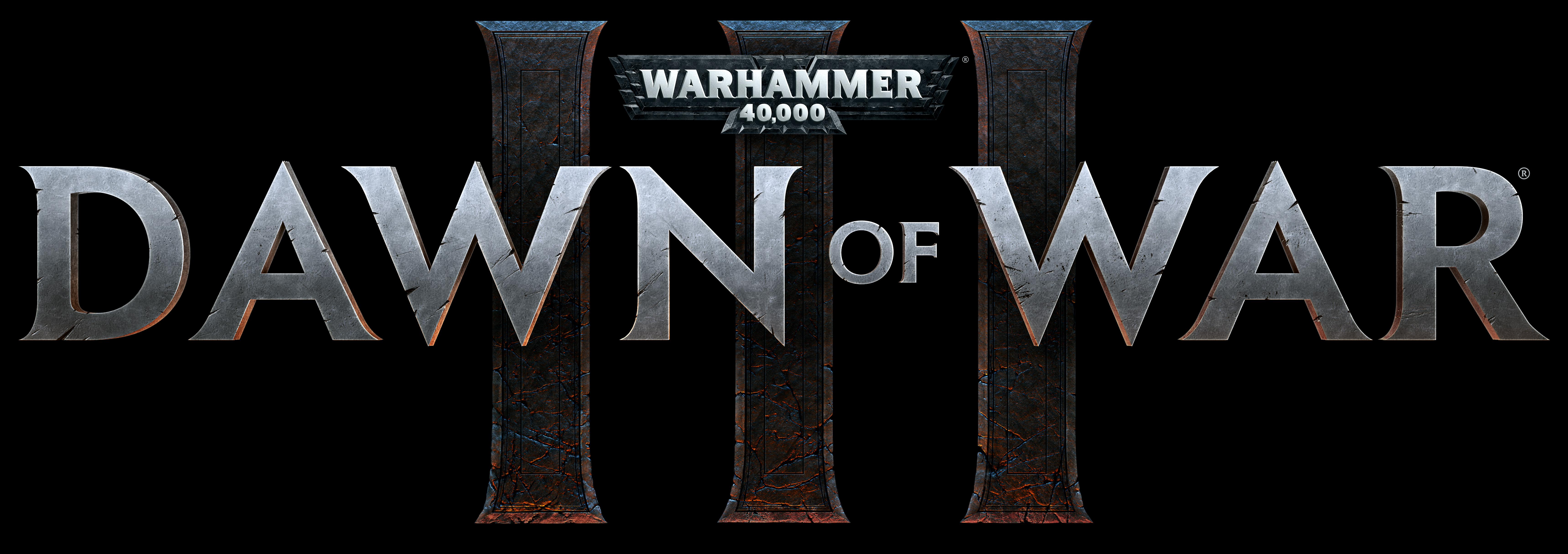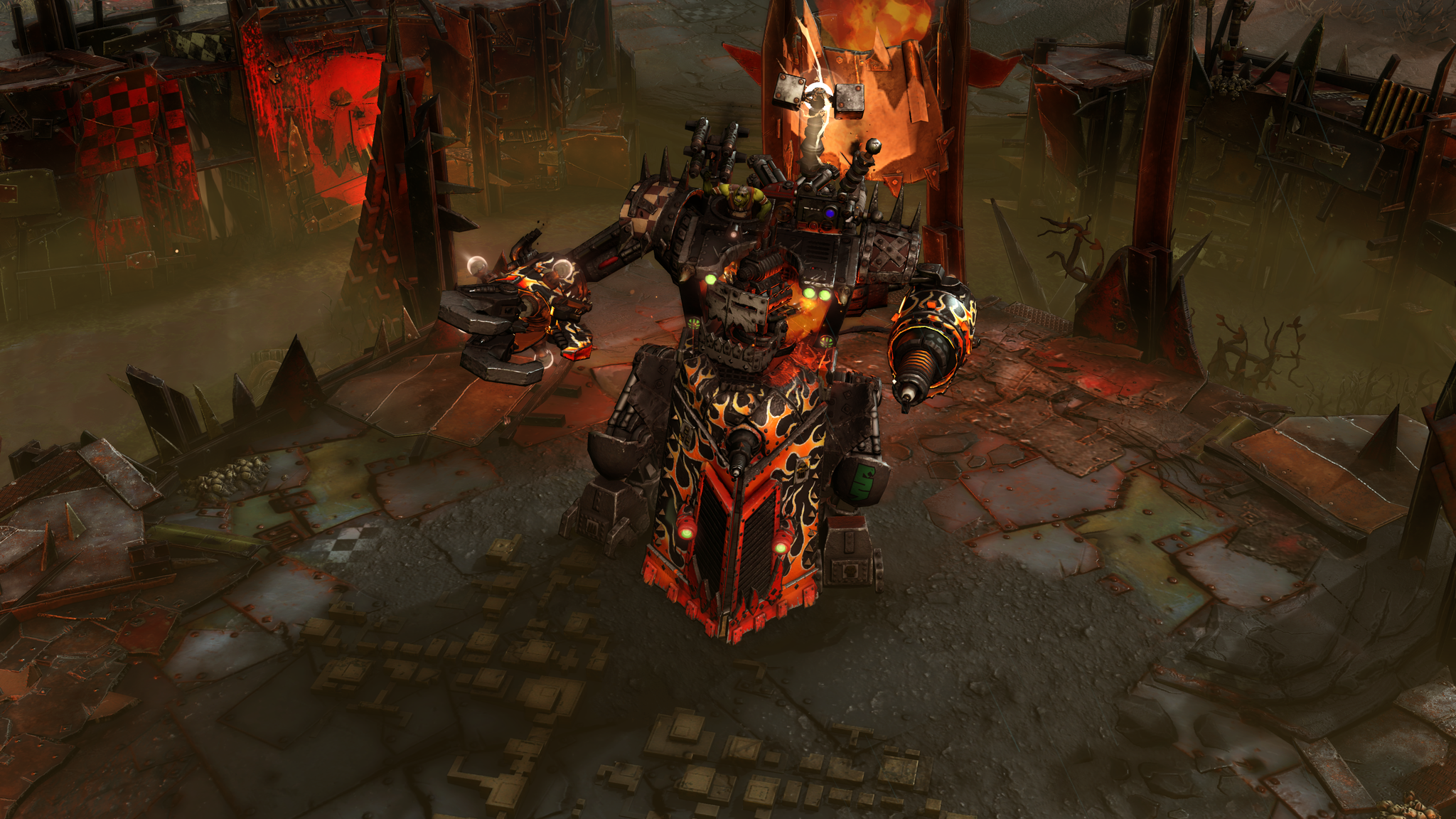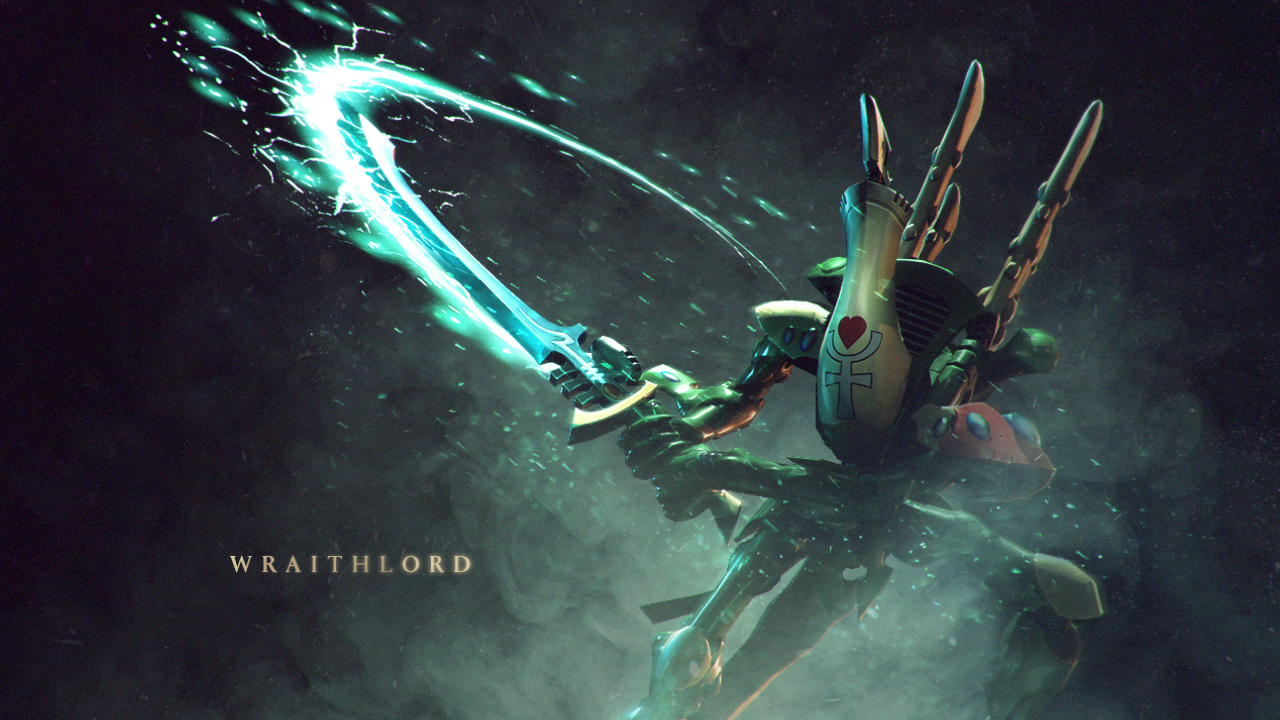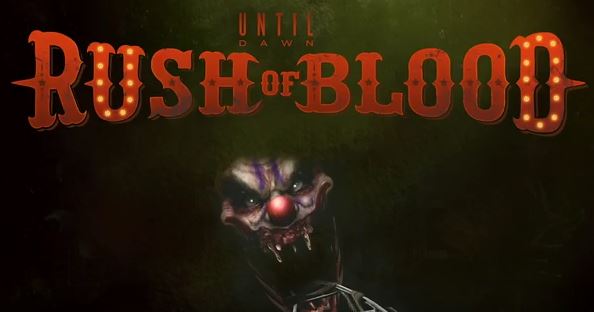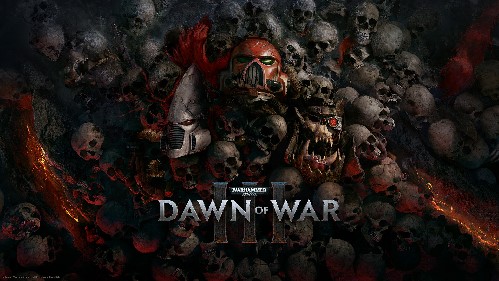
In the grim, dark future of the Warhammer 40k universe, there is only war… or WAAAGH, depending on who you ask. A ceaseless, interplanetary conflict rages between hordes of marauding Orks, zealous, warmongering Humans and ancient Eldar, consuming countless worlds and cutting a trail of death across the galaxy.
Perennial RTS veterans Relic Entertainment have, so far, taken us on two tours of this conflict, first in the acclaimed Dawn of War (2004), which was lauded for it’s large scale combat and refreshing resource capture mechanics. They followed this success with the polarising Dawn of War II (2009), ditching most base and army building systems in favour of small-scale, squad-based combat, further augmented by powerful hero units and special abilities.
Returning now with Warhammer 40,000: Dawn of War III, Relic have attempted to modernise and refresh the competitive strategy experience with a blend of the design approaches seen in their last two games, as well as borrowed concepts from the MOBA titles that have dominated this space in DoW‘s eight year absence. The result is a title that, while visually impressive and enjoyable to play, suffers from a lack of focus and spreads itself too thin to do any one thing particularly well.
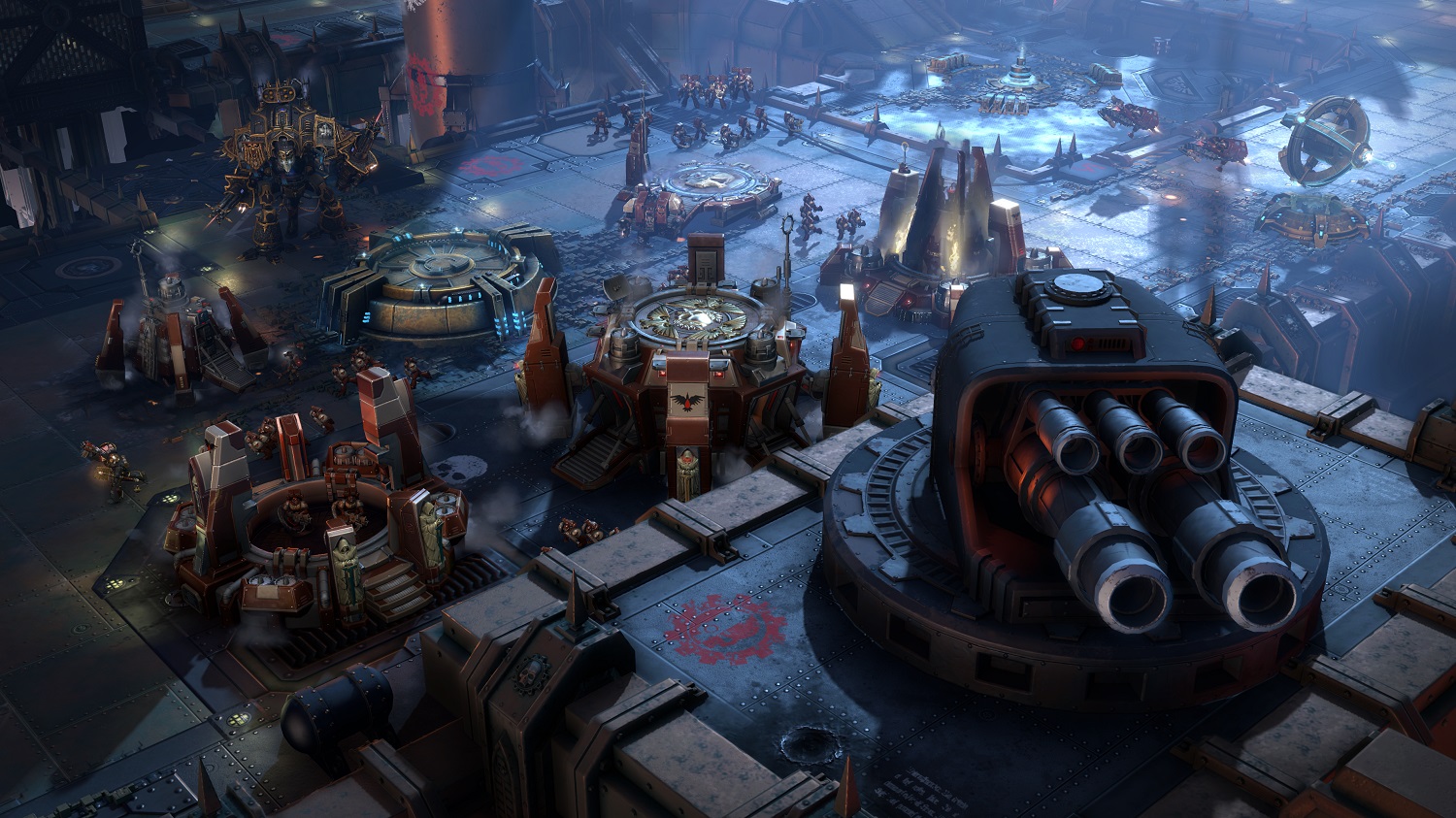
In a rare move for today’s industry, DoWIII actually ships with an impressive amount of single player content. The campaign takes place across 17 missions, each ranging from 30 minutes to several hours in length, and offers a fantastic way to slowly familiarise yourself with each of the three playable races. The plot isn’t going to win any awards, but it’s dramatic and oddly humorous in the manner you’d expect from the Warhammer 40k canon, and does its job of justifying your efforts in the campaign.
Outside of the campaign there are, of course, AI skirmishes to enjoy, however most people are likely to skip over this and head straight to multi-player. Nonetheless, single-player options are available and Relic should be commended for shipping a game that that can be played and enjoyed without an internet connection or a human opponent.
Playable races are few in number, but well balanced and diverse by design. Aside from the expected differences in units and buildings, each race packs unique and powerful abilities, such as the Eldar teleportation or the Ork’s scrap/resource recovery, which are powerful enough to warrant some tactical use but thankfully aren’t so influential as to unbalance the races or make one more viable than the others.
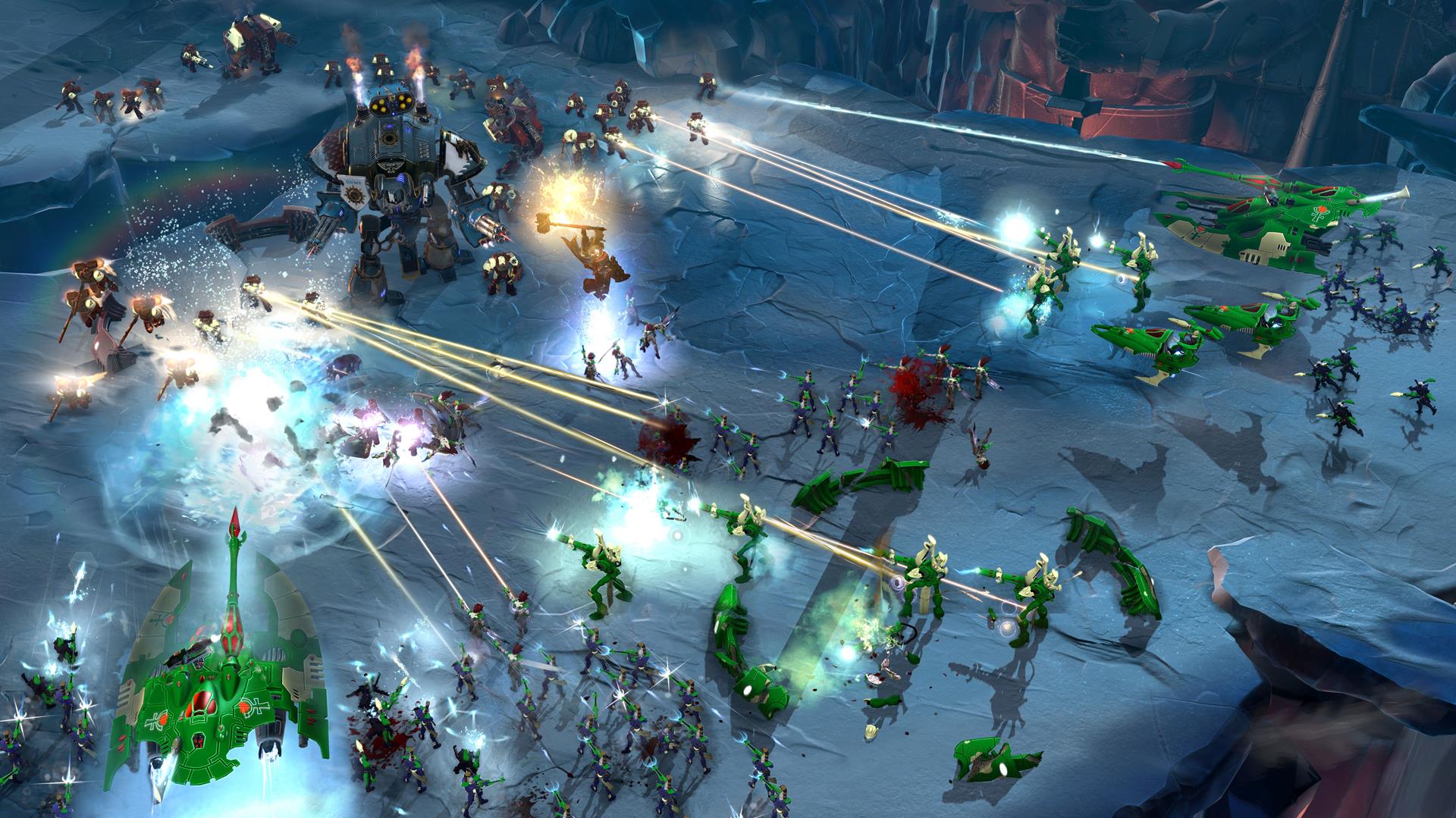
One complaint I have, as mentioned, is the overall lack of playable races. Granted, most titles, including previous DoW games, will ship additional races as part of expansions or DLC, but… only three on release? It feels a little scant, and the idea of paying more money in a few months just to play as my beloved Necrons is as frustrating as ever, assuming paid DLC is the road Relic and Sega choose to take with the title.
Combat has had somewhat of a revamp, as have the win conditions of a match. If, like me, you were hoping for more of what we loved in DoWI and missed in DoWII, you will be disappointed. No longer built around destroying your opponent’s unit-producing structures, or on claiming a resource victory, DoWIII instead focuses on a MOBA style battle in which your aim is to destroy each stage of your opponent’s defences until reaching their ‘power core’ which, once destroyed, wins you the game.
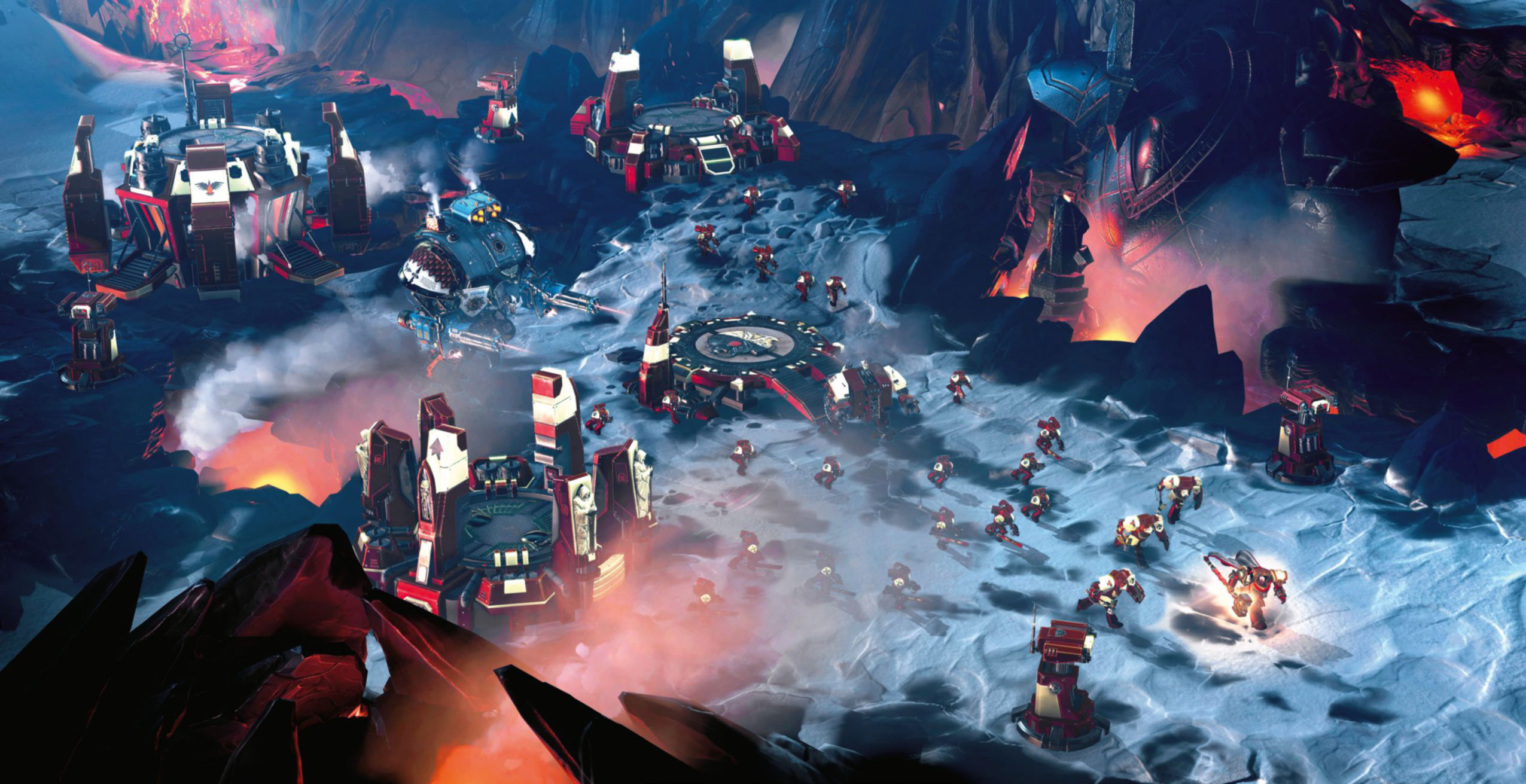
Base building is present but neutered, serving only the most basic functions of producing units and offering some simple research upgrades. There are very few buildings per race, they have no synergy with one another and do not present any sort of tech tree to progress through. You’ll return to base only to heal injured units or order reinforcements.
Given that the base system is so stripped down, it’s bizarre that Relic have made it a player-controlled mechanic at all, in that we’re really only selecting the placement of each building at the start of the match. Gone are the days of memorising a meticulously planned build order; there’s nothing to build or research.
Cover and positioning mechanics are another system that used to shine as a point of difference in DoWI, but have now been similarly trivialised. In fact, any real impact that unit placement had on combat seems to have been removed.
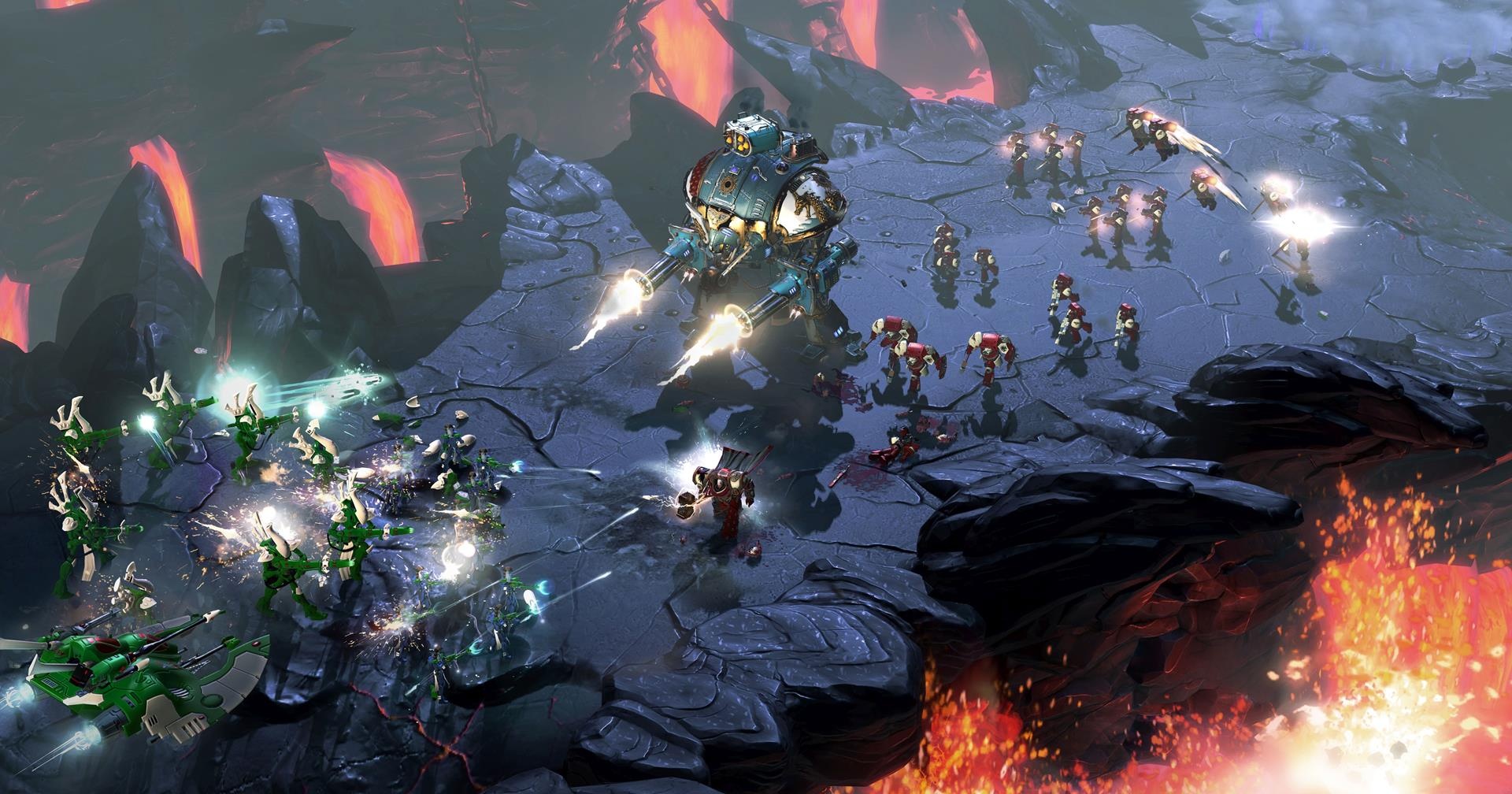
There do exist bunkers around the map that can be captured to provide some protection bonuses, but the otherwise functional AI seems to have trouble remaining inside these structures once engaged in combat, preferring instead to run out of cover and stand directly in front of your opponents. Aside from that, they’re poorly placed on the map, away from choke-points and generally in locations of no strategic importance at all.
Dawn of War III‘s tactical depth comes in the pre-fight planning and loadout stage, which gives you the choice of which heroes to take into battle, which abilities they will employ, and what tactical modifiers and bonuses your army will benefit from, called Doctrines. Doctrines focus mainly on niche buffs to particular units or abilities, and serve to focus your build around your preferred tactical style and unit make-up. Heroes range from early-game rushers that cost little to summon but offer only limited or circumstantial advantage, to full sized juggernauts that cost a fortune, tower over the battlefield and cut through swathes of enemies with each swing of their enormous, metal appendages.
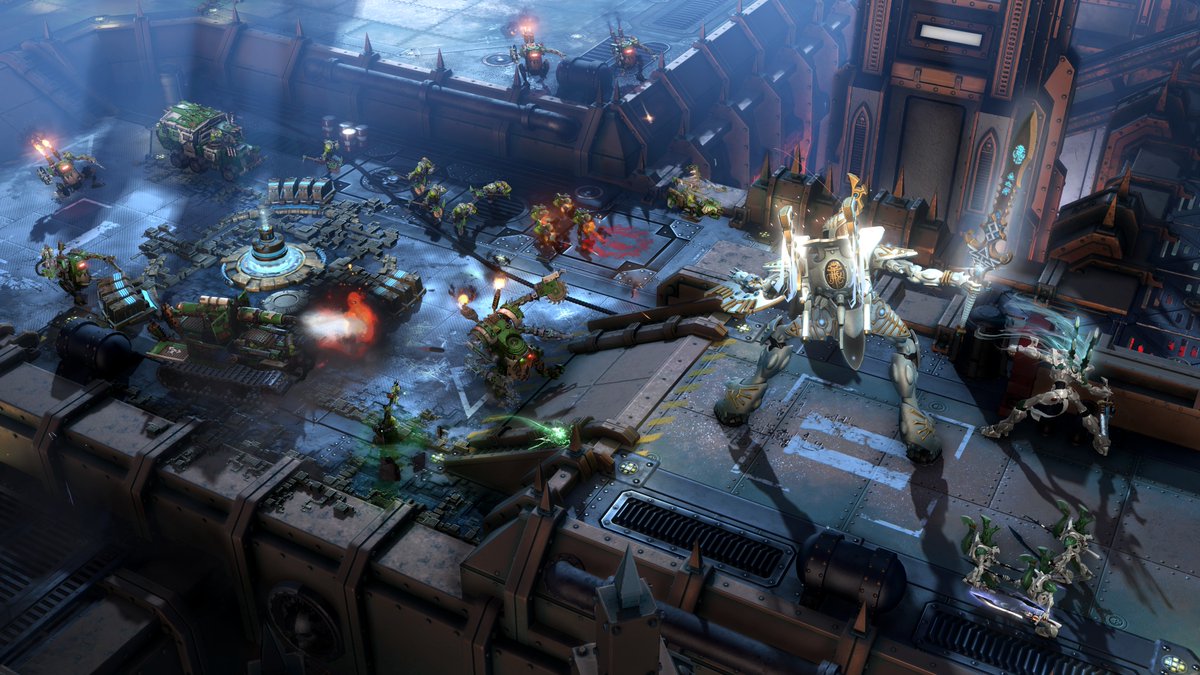
Some of the larger, more powerful heroes are immensely fun to play with. Landing with a bang and a wave of force in the middle of a fire-fight, they add to the drama and adrenaline of the already chaotic battles in DoWIII. For Warhammer tabletop players like myself, these units recall the sensation of deploying similar monstrosities onto a real world table and, literally, carving your way to victory.
On paper, this tactical system is rich and complex, offering many combinations of heroes, abilities and Doctrines once you’ve spent the required hours to unlock every option. Despite all the effort, however, the playing field still feels flat and boring, with no tactical options standing out as particularly powerful or effective.
Balance is one thing, but it’s as though Relic have simply set everything to the same low power level, resulting in strategic choices that have little-to-no impact on the game when compared to the sheer, overwhelming force of a larger army. Most matches simply come down to who builds the larger army, faster.
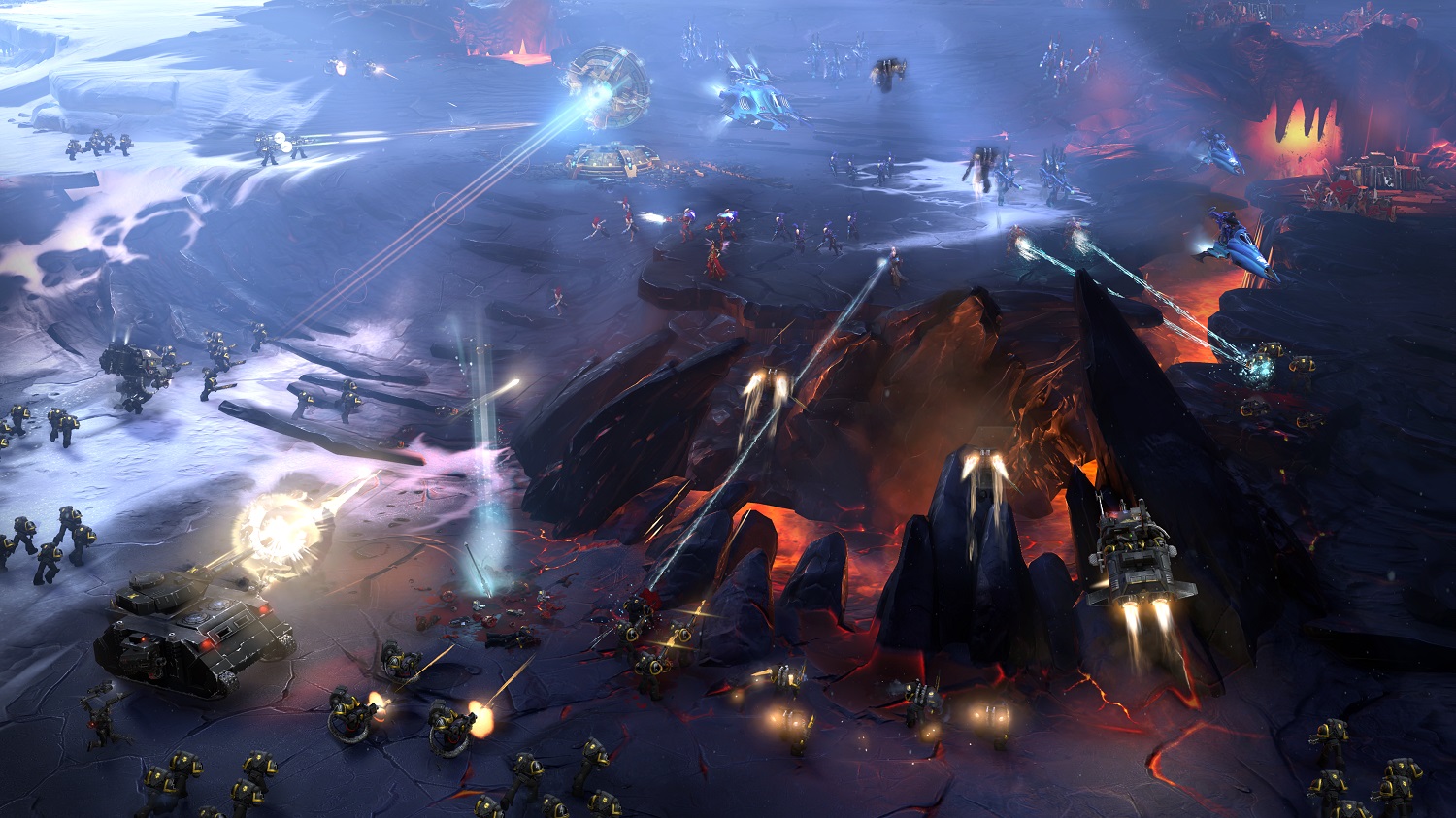
Trivialising or completely removing many tried and true RTS concepts such as base building and tech trees, Relic have developed a tactical system that exists more-so in the pre-game planning phase than it does on the actual battlefield. Innovation isn’t a bad thing, but Warhammer 40,000: Dawn of War III will fail to provide the fan service that long time supporters of the series were hoping for. It’s a sequel only in name and story.
As a multi-player strategy experience, it delivers a blend of RTS and MOBA that feels fresh and sufficiently different from anything else in recent memory. However, in the blending of so many concepts and mechanics, nothing stands out as particularly well designed or complete. Warhammer 40,000: Dawn of War III is a jack of many trades, but master of none.
- Fantastic visuals. - Ample single player content. - Fresh MOBA/RTS blend. - Chaotic combat.
- Tactical choices are irrelevant. - RTS elements made too light. - Systems don't feel fleshed out.

